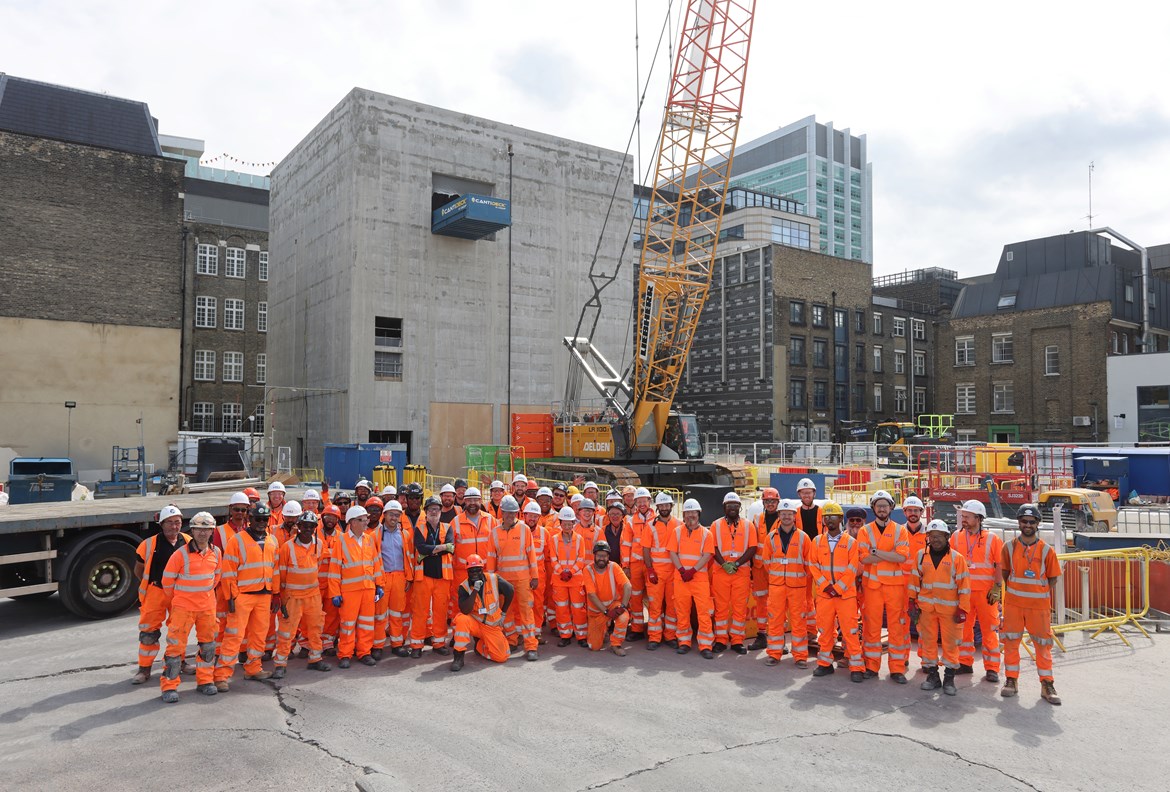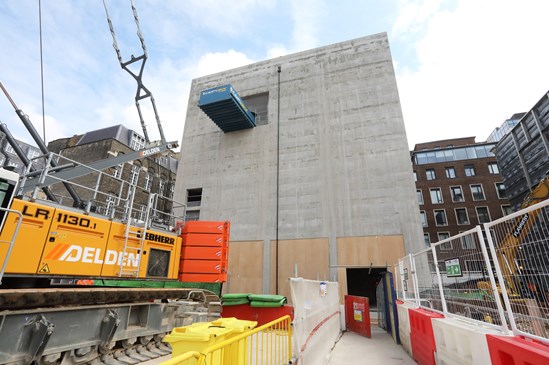A new structure that will house infrastructure for the London Underground has been completed as part of HS2’s redevelopment at Euston.
The existing Traction Substation (TSS) for the Northern line – which runs beneath the terminus – needs to be moved as part of preparations for the construction of the high-speed line station.
Traction substations are used to convert electrical power to a form suitable for rail systems. The new Euston TSS will enable the relocation of equipment needed to provide services and ventilation for the safe operation of the Northern line.
HS2’s construction partner at Euston, Mace Dragados Joint Venture (MDJV), completed a three-week concrete pour to create the external walls of the superstructure of the building at the end of May. To create the reinforced concrete walls, the team used 80km of steel reinforcement bars, equivalent to the distance between London and Brighton, and poured 600m3 of concrete.
The next phase was the fit out of the internal blockwork and doors, followed by the completion of the roof on top of the structure.
Below ground, the MDJV team have excavated a 20m deep box and a 90m long tunnel connecting the new highly secure TSS to the London Underground network. The work to construct the tunnel was a 24-hour operation in a densely populated part of London and to reduce noise impact on the community and businesses nearby, an acoustic shed was erected by the team over the construction shaft.
In total construction of the new traction substation structure has involved over 600,000 manhours of work onsite, with over 100 staff working on site per day at its peak. The total amount of material excavated by the team is over 12,000m3 – the equivalent of nearly five Olympic-sized swimming pools.
During the work, the operation of the existing London Underground substation was maintained throughout, even whilst the team broke through from the new tunnels to the existing tunnels.
The team led by MDJV has also successfully completed the civils and structural work with no major incidents whilst working adjacent to a Thames Water main and large sewer, and underneath the operational Northern and Victoria London Underground lines.
Speaking about the completion of the civils work of the traction substation, Andy Swift, Project Client for Euston Station at HS2 Ltd, said:
“The Euston team have worked around the clock to complete the first above ground structure required for HS2’s Euston station. Whilst the station design is under review, the Government is committed to bringing HS2 to Euston, and we are continuing with work required to make that happen.”
Paul Leighton, Delivery Director, Mace Dragados JV said:
“The traction substation project represents everything that’s exciting about complex infrastructure delivery. From working within a tightly constrained physical environment to liaising with a wide range of stakeholders and managing their competing needs. We’ve had to draw on experienced colleagues from across our diverse team and supply chain to meet this critical milestone.”
The mechanical, electrical and plumbing (MEP), and architectural fit out of the TSS has now begun with commissioning due to be completed in 2025. New modern equipment will be installed which will provide improved reliability and reduce maintenance requirements. Once the new infrastructure is up and running, the old equipment currently housed in the existing TSS on Melton Street will be decommissioned and the building demolished.
The existing TSS is a building which was once an entrance and exit to what is now known as the Northern line and was designed by the architect Leslie Green. Changes to the London Underground at Euston in 1914 meant that the building was no longer used as a ticket office and entrance but was used to house ventilation equipment for the underground. HS2 will be carefully removing some of the iconic historic features and tiles donating these for reuse and heritage displays.
Euston will eventually become HS2’s main southern terminus in the capital. In line with direction from the government, it was announced earlier this year that full construction of the new station would be paused to ensure it is delivered as efficiently and cost effectively as possible. HS2 continues to carry out enabling works which will still be required for the completion of the HS2 station, making sure the programme can restart as efficiently as possible in due course.
During this time, some of the land set aside for the station will be temporarily repurposed for community use.


